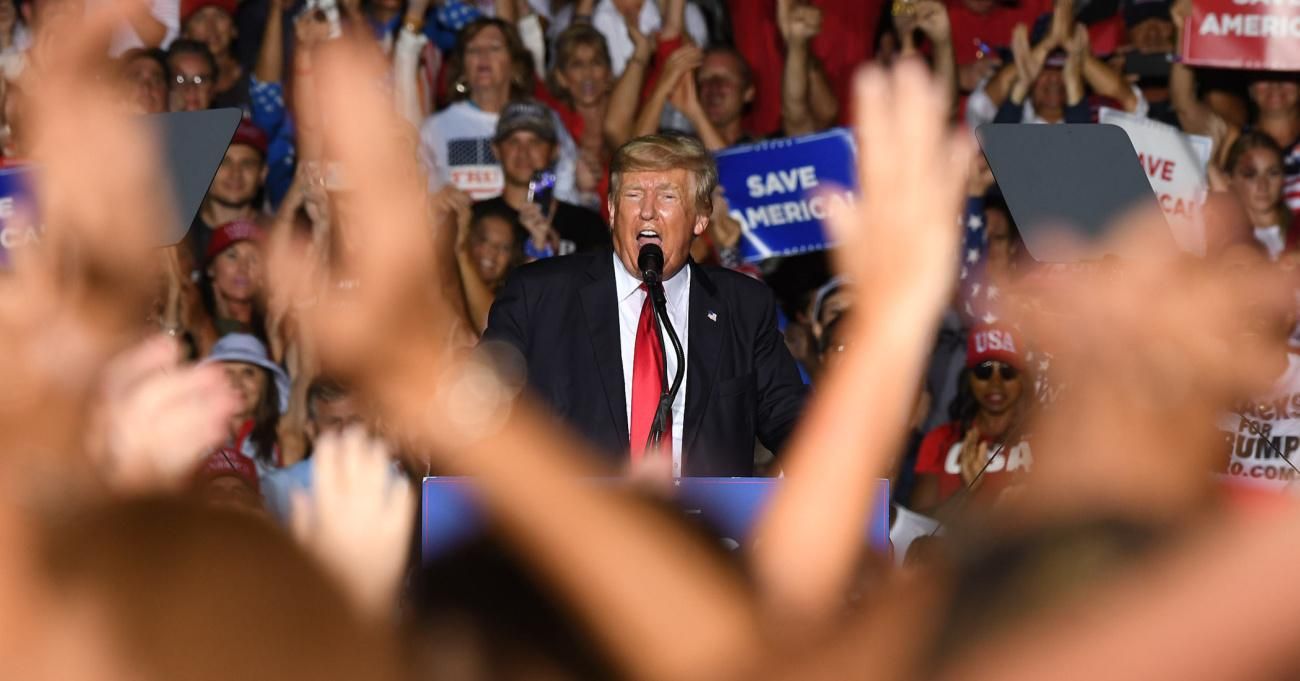
A new paper by two political scientist and an anthropologist aims to explain how humans have evolved to spread conspiracy theories, misinformation, and other falsehoods through communities as a way of gaining an advantage over opposing factions—maintaining the upper hand in a society by mobilizing large groups of people and securing their loyalty, as former President Donald Trump and other demagogues throughout history.
The researchers pointed to other animal species using falsehoods to gain the upper hand in conflicts—such as animals that “spread false information” by making themselves appear larger to scare an opponent—but noted that in communities of humans, the spread of falsehoods is mainly beneficial in a group of people.
“Belief in information and content that other people would say is blatantly false is becoming more widespread. It can have some pretty dire consequences, as we could see for example with the storming of the Capitol on January 6.”
—Michael Bang Petersen
The study identified three functions of sharing information—”group mobilization, coordination of attention, and signaling commitment.”
In evolutionary terms, the researchers argue in the paper, “accomplishing these goals efficiently is what gets selected… not truth or veracity.”
“When you want to mobilize your group, what you need to do is find out that we are facing a problem, and your way of describing that problem needs to be as attention-grabbing as possible before you can get the group to focus on the same thing. In that context, reality is seldom as juicy as fiction,” said Petersen. “By enhancing the threat—for example, by saying things that are not necessarily true—then you are in a better situation to mobilize and coordinate the attention of your own group.”
Trump used falsehoods to establish conflicts between his base and the Democratic Party, political opponents, and other groups numerous times, Petersen said, including his claim “that there were more people at Trump’s inauguration than Obama’s inauguration, and everyone could clearly see that was false.”
“Either Trump is ignorant—and I don’t believe he’s ignorant, I think he is an extremely skilled or intuitive psychologist who knows how to mobilize his followers—or it suggests he’s thinking, ‘I can say whatever I want, and I care so little about the other group’s opinions that I can say things that are blatantly false, where they know that I know it’s false, and it’s precisely because they know that I know that it’s false that it serves as a dominance signal,'” said Petersen.
Petersen’s theory of the deliberate use of falsehoods and conspiracy theories also offers an explanation for how hundreds of Trump’s supporters proceeded to the U.S. Capitol on January 6 to take part in a violent attempted insurrection.
“It seems that those kind of belief systems—belief in information and content that other people would say is blatantly false—is becoming more widespread,” Petersen said. “It can have some pretty dire consequences, as we could see for example with the storming of the Capitol on January 6.”
Trump and leaders like him—and humans as a whole—have evolved to spread information not because it is necessarily true, but because it allows them “to accomplish certain socially important phenomena, such as mobilizing our group or signaling that we’re loyal members of the group,” said Petersen.
Survival of the Fibbest? Study Suggests BS Conspiracy Theories Have Roots in Human Evolution
Source: Articles Viral Post
0 Comments